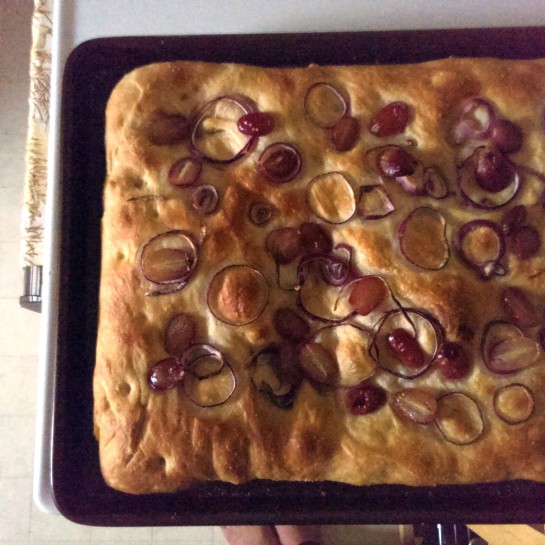self-actualization and bread.
We live in an old, creaky apartment with cracks that crawl up the walls, lumpy hardwood floors, and crooked charm. The harbinger of winter is the sound of the radiators coming on, first with slow grumbling and hisses, building up to rattling like a tin kettle boiling over. Occasionally it sounds like a troll is inside the radiator hammering his axe against the metal.
With radiators the heat is either nil, or pumping full blast. Blazing heat is wonderful when it is the lonely wolf days of winter, but right now when we are dancing through the last days of fall, a radiator turned on means sweating in shorts on the couch. So instead I keep them off, and heat our apartment with some baking action in the oven. Recently I’ve been hooked on baking bread – or rehooked, to be accurate. One of my first forays into baking was making a white loaf out of a Canadian Living cookbook – crinkled photocopies of which I still have, because at the time I was still so young that I would have had to plea with my parents to buy the book, so instead I just borrowed it from the library.
I have found over the years that bread dough is incredibly sensitive to your emotional and mental state, and will behave like a sullen toddler if you are irritable and rushed, refusing to budge in its bowl and rise into its full airy potential. However, if you are kind, patient and benevolent, it will rise perfectly, and grow into a beautiful loaf that you are deeply proud of helping to shape. I have also come to realize that hands-off parenting seems to work best with bread dough – a few gentle turns, and then leave it be. Too much pressure and stress on dough (and similarly a child) to self-actualize, and all your efforts will simply backfire, resulting in unrealized development in both cases. Or at least, limited growth in the particular areas desired by the parent. In the bread’s case, it becomes a “flatbread.” For the person, God only knows.
Frankly speaking, I think flatbreads are wonderful things. Left plain, they are excellent supporting characters to stews and soups. Alternately, all that surface area invites embellishment with toppings (herbs, cheese, sun dried tomatoes…). Most importantly, it is such a celebratory moment to present to your loved ones a wide, beaming spread of bread.
So you, flatbread or not – you have a place at my table.
——-
This focaccia is inspired by the one in David Tanis’ Heart of the Artichoke and Other Kitchen Journeys. I replaced his olive oil with sunflower oil for frugality’s sake, and didn’t bother caramelizing the red onions ahead of time, instead simply slicing them paper thin to scatter on top. Patience and forethought are required, as an overnight rise is needed for this dough.
Red Onion and Red Grape Focaccia
makes 1-11×17″ flatbread
1/2 cup lukewarm water
1 tbsp active dry yeast
3 tbsp all-purpose flour
1 cup lukewarm water
3 cups minus 3 tbsp all-purpose flour
2 tsp salt
1/2 cup sunflower oil
cornmeal
Mix the first three ingredients together in a large bowl. Let it sit for about 5 minutes, until it gets a little bubbly. (In my general experience, getting my yeast to wake up this early in the process is as futile as trying to wake up a grandpa from his armchair. Regardless, I forge on, and make do with a longer rise time.) Add the remaining ingredients and stir with a wooden spoon. Knead it in the bowl lightly. With one hand, tilt the dough to one side of the bowl and add a touch more oil to the bottom of the bowl. Use your non-dough hand to swoosh the oil around to coat the insides of the bowl. Turn the dough over in the oil to coat, and cover with plastic wrap. Let it rise overnight. I like to let my dough sit at room temperature, and put it in the fridge just before I go to bed. The next day, take it out of the fridge and let it warm up to room temperature for at least one hour. Scatter a good layer of cornmeal on your baking sheet, and gently stretch the dough out on it. Scatter thin rings of red onion and halved red grapes over. Add an extra sprinkle of coarse salt. Bake in a preheated 400 F oven, for 25-30 minutes, until golden. Let it cool before slicing or breaking apart with your hands.
We ate it with homemade labneh, pickled beets, and a simple dip of olive oil and balsamic vinegar.

Pingback: stock pizza. | twohollowlegs